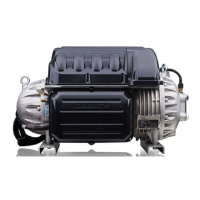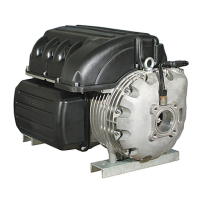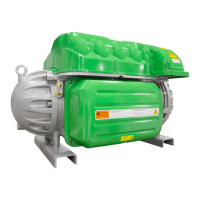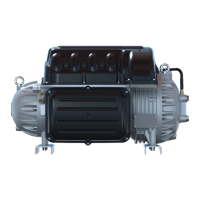3 Installation
3.1 Planning the Installation Site
NOTICE
Before performing the installation it is important to plan
the installation of the frequency converter. Neglecting
this may result in extra work during and after instal-
lation.
Select the best possible operation site by considering
the following (see details on the following pages and
the respective Design Guides):
•
Ambient operating temperature
•
Installation method
•
How to cool the unit
•
Position of the frequency converter
•
Cable routing
•
Ensure the power source supplies the correct
voltage and necessary current
•
Ensure that the motor current rating is within the
maximum current from the frequency converter
•
If the frequency converter is without built-in
fuses, ensure that the external fuses are rated
correctly
Voltage [V] Altitude restrictions
380-500 At altitudes above 3,000 m, contact Danfoss
regarding PELV
525-690 At altitudes above 2,000 m, contact Danfoss
regarding PELV
Table 3.1 Installation in High Altitudes
3.2
Pre-Installation Check List
•
Before unpacking the frequency converter, ensure
the packaging is intact. If any damage has
occurred, immediately contact the shipping
company to claim the damage.
•
Before unpacking the frequency converter, locate
it as close as possible to the final installation site
•
Compare the model number on the nameplate to
what was ordered to verify the proper equipment
•
Ensure each of the following are rated for the
same voltage:
•
Mains (power)
•
Frequency converter
•
Motor
•
Ensure that frequency converter output current
rating is equal to or greater than motor full load
current for peak motor performance
•
Motor size and frequency converter
power must match for proper overload
protection
3.3 Mechanical Installation
3.3.1 Cooling
•
Top and bottom clearance for air cooling must be
provided. Generally, 225 mm (9 in) is required.
•
Improper mounting can result in over heating
and reduced performance
NOTICE
A door fan(s) is required on the enclosure to remove the
heat not contained in the backchannel of the frequency
converters and any additional losses generated by other
components inside the enclosure. The total required air
flow must be calculated so that the appropriate fans can
be selected.
Airflow
The necessary airflow over the heat sink must be secured.
The flow rate is shown in Table 3.2.
Frame Door fan/top fan Heat sink fan
D1h
102 m
3
/hr (60 CFM) 420 m
3
/hr (250 CFM)
D2h
204 m
3
/hr (120 CFM) 840 m
3
/hr (500 CFM)
Table 3.2 Airflow
3.3.1.1
Refrigerant Cooling
The Danfoss Turbocor frequency converters are equipped
with refrigerant cooling.
The refrigerant inlet is on the top of the frequency
converter to the left.
The refrigerant outlet is on the top of the frequency
converters to the right.
Dimensions
3/8 inch OD X 0.049 inch wall thk
Material COPPER ALLOY 122, ASTM B-75, annealed
Nominal operating
pressure
10 bar/145 psi
Maximum working
pressure
12 bar/174 psi
Table 3.3 Tubing Specifications
Installation
Danfoss Turbocor
6 Danfoss A/S © 01/2015 All rights reserved. MG35Q202
33

